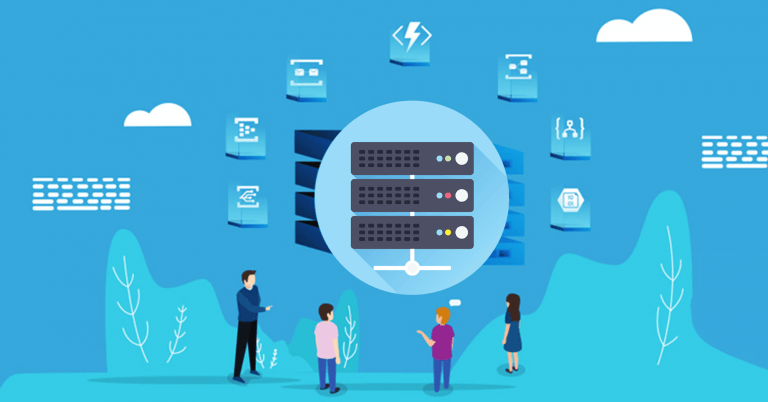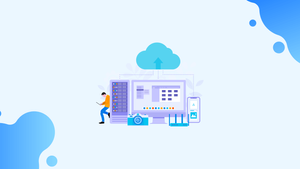Before discussing the benefits and impact of serverless architecture on developers and operations team, we must know what exactly serverless mean. It’s still a new concept and is unclear to many people. With the introduction of AWS Lambda in 2014, it started gaining momentum and growing exponentially since then.
What is serverless?
Serverless is a cloud systems architecture that depends on third-party services also known as (BaaS) – Backend as a service, or they run on temporary container also known as (FaaS) – Function as a Service. They don’t involve any servers, virtual machines, or containers to provision or manage. They still exist behind the running application, but the developer or operators of the application doesn’t realize their presence. You need not go with the literal meaning of the term serverless. It simply means that you need not have virtual machines or servers to run your back-end code.
Using serverless, developers need not worry about the servers as they will give their respective function to the service provider who will run their function on demand or on an event basis. In this way, the developers have no need to handle load balancing as the requests/functions will be served on-demand basis. In the case of parallel requests, there will be a function running for each particular application. This way serverless computing makes scalability of the server to infinity.
The consumer of the cloud is charged according to the execution time of the function, per millisecond. If the client is up, and the functions are in use, the consumer will be charged; if there are no clients, and the functions are not in use, there are no events, the consumer will not be charged. It will ultimately help in saving money.
Now let’s understand with some characteristics give by AWS to easily classify which application is serverless and which is not. We will be discussing these 4 characteristics in detail.

Characteristics to distinguish between serverless and not serverless
No servers to manage or provision
When you don’t manage physical servers, virtual machines, or containers. They may exist, but they’re managed by the cloud providers.
Priced by consumption
It is heard quite often in the serverless community that “You never pay for idle time”. You only pay for the time until your function is running, and when it is in the idle state you will not be charged. Using AWS Lambda you only pay for the amount of time your function ran rather than an EC2 machine for which you have to pay even when your system is idle.
Scales with usage
Serverless applications have built-in auto-scaling. As requests come in, service or application scales to meet the demand. With auto-scaling, however, you’re responsible for figuring out how to integrate the new service instance with the existing running instances. Some services are easier to integrate than others. Serverless takes care of that work for you.
Availability and fault tolerance built in
Using serverless architecture, you’re not responsible for ensuring the availability and fault tolerance of the serverless offerings. Your cloud provider will keep an eye on that. That means you’re not running multiple instances of a service to account for the possibility of failure.
Now that you have thoroughly understood what serverless is, let’s understand why adopting Serverless is worth giving a chance?
Why serverless computing?
It Saves Time and Overhead Costs
Many large companies are already leveraging the benefits of serverless computing to help trigger code in response to a series of pre-defined events. Serverless computing is based on ‘pay as you use’ model, that’s what makes it more interesting. You will be charged for the time your function is running and the number of times it is triggered. In this way, you can save a lot of money as compared to the general cloud infra, which charges you even when the system is idle.
It is also Function as a Service (FaaS)
The day when Amazon launched its AWS Lambda serverless computing platform in 2014 it gave a new meaning to Function as a Service. You can run code on any type of backend service without even managing any servers. And you pay for only the time for which you are using the service. Developers need to just upload the code and the rest all will be done by Lambda. Using Lambda, it is possible to automatically trigger any service.
Nanoservices
Using serverless you can work will a lot of architectures and nano-services is one among them. Each API endpoints points to the function file that implements one CRUD functionality. It works in perfectly with microservices, another architecture of serverless computing, and enables auto-scaling and load balancing. You no longer have to manually configure clusters and load balancers.
Event-based Compute Experience
Companies always worry about their infrastructure costs and servers when their Functions call rate become very high. Serverless providers like Microsoft Azure and AWS Lambda are a great solution for these kinds of situations, as they aim to provide an event-based serverless compute experience to aid in faster app development.
As it is event-driven, developers no longer have to rely on the ops to test their code. They can quickly run, test and deploy their code without getting lost in the traditional workflow.
Scaling
Serverless computing automatically scales your application and with each individual trigger, your code will run parallel to it, thereby reducing your workload and saving time in the process. You will be charged for every 100ms your code executes and for the number of times the code is triggered. This is a good thing because you no longer pay for an idle computer. When the system is not in a running state, you don’t have to pay anything.
No worries about the machinery
Infrastructure as a Service assures developers that they can stop worrying about how many machines are needed at any given point of time, especially during peak hours, whether the machines are optimized enough and are the security measures tight enough. Developers can ignore hardware, concentrate on their development work, which can dramatically reduce costs.
Capacity Decisions
A huge portion of servers remains idle. Infrastructure providers make the capacity decisions and allot just the required capacity based on the needs of the enterprises, thereby saving the environment in the longer run.
To Wrap Up
The simplicity and cost-saving feature of serverless computing are what makes it famous and worth considering among developers. The vendor looks after all of this, especially the scaling part, without compromising on the performance of the app. The vendor takes care of the scaling part so that the performance of the app doesn’t get compromised.
Apart from AWS Lambda and Microsoft Azure, there are some prominent serverless frameworks like Google Cloud Functions, IBM OpenWhisk, and Iron.io that have already made waves in serverless computing. Over the years, you can expect this trend to be at the forefront of the cloud ecosystem.

